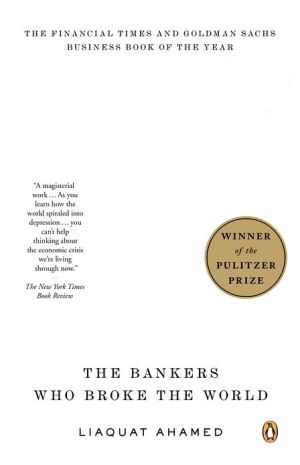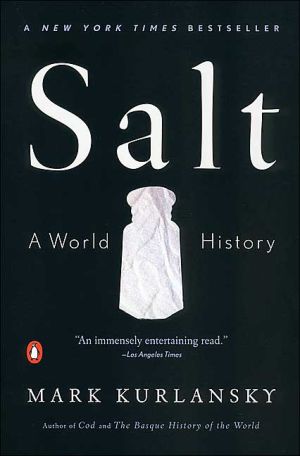Tulipomania: The Story of the World's Most Coveted Flower & the Extraordinary Passions It Aroused
In the 1630s, visitors to the prosperous trading cities of the Netherlands couldn't help but notice that thousands of normally sober, hardworking Dutch citizens from every walk of life were caught up in an extraordinary frenzy of buying and selling. The object of this unprecedented speculation was the tulip, a delicate and exotic Eastern import that had bewitched horticulturists, noblemen, and tavern owners alike. For almost a year rare bulbs changed hands for incredible and ever-increasing...
Search in google:
In the 1630s, visitors to the prosperous trading cities of the Netherlands couldn't help but notice that thousands of normally sober, hardworking Dutch citizens from every walk of life were caught up in an extraordinary frenzy of buying and selling. The object of this unprecedented speculation was the tulip, a delicate and exotic Eastern import that had bewitched horticulturists, noblemen, and tavern owners alike. For almost a year rare bulbs changed hands for incredible and ever-increasing sums, until single flowers were being sold for more than the cost of a house. Historians would come to call it tulipomania. It was the first futures market in history, and like so many of the ones that would follow, it crashed spectacularly, plunging speculators and investors into economic ruin and despair.This is the history of the tulip, from its origins on the barren, windswept steppes of central Asia to its place of honor in the lush imperial gardens of Constantinople, to its starring moment as the most coveted--and beautiful--commodity in Europe. Historian Mike Dash vividly narrates the story of this amazing flower and the colorful cast of characters--Turkish sultans, Yugoslav soldiers, French botanists, and Dutch tavern keepers--who were centuries apart historically and worlds apart culturally, but who all had one thing in common: tulipomania. USA Today If you like popular history or worry about the Nasdaq, Tulipomania is a sound bet.
A Mania for Tulips\ \ They came from all over Holland, dressed like crows in black from head to foot and journeying along frozen tracks rendered treacherous by the scars of a thousand hooves and narrow wheels. They had cloaked and blanketed themselves against the biting winter wind -- the wealthiest rattling along in unsprung carriages that jerked from rut to pothole like an untried sailor lurching through a hurricane, the rest on horseback with their heads bowed against the cold. Traveling singly or in twos and threes, they clattered through the flat and sterile landscape north of Amsterdam, riding on until they came to the little town of Alkmaar near the coast.\ \ They were middle-aged and stoutly built: shrewd and successful men who had made their money in trade, who knew how to turn a profit and what it meant to live well. Most were clean-shaven and ruddy-faced; their clothes, though drab, were cut from the finest cloth, and the purses that they carried were snugly full of money. Passing through the gates of the town at dusk, the visitors made their way through Alkmaar's cramped and narrow streets and found rooms in taverns near the busy marketplace. There they ate and drank and puffed their long clay pipes into the night, calling for great pitchers of wine and plates of roasted meats, sprawling back in their hard wooden chairs and talking shop till past midnight by the smoky, jaundice-yellow light of the peat fires in the grates.\ \ The business of these rich Dutch merchants was not grain or spices, timber or fish. They dealt, rather, in tulip bulbs -- drab and anonymous brown packages of no intrinsic worth, which resembled nothing so much as onions. Yet asunpromising as they might at first appear, flowers at this time were far more precious than the richest commodities that could be found piled up on the wharves of Amsterdam. Some tulips were so scarce and so greatly coveted that they were worth more than a hundred times their weight in gold, and successful bulb dealers could make huge profits. At this time the richest man in the whole of the United Provinces was worth 400,000 guilders -- a sum amassed over several generations. But some tulip traders were buying and selling single flowers for hundreds, even thousands of guilders and building paper fortunes of as much as forty or sixty thousand guilders in a matter of a year or two.\ \ The bulb dealers had come to Alkmaar to attend an unprecedented auction. The guardians of the little orphanage in the town had come into the possession of one of the most valuable collections of tulips in the whole of the Netherlands. Caring more for the flowers' value than for their beauty, they were selling off the bulbs for the benefit of some of the children in their care. So shortly after dawn broke, gray and chill, the traders began to make their way to the saleroom in the Nieuwe Schutters-Doelen -- the headquarters of Alkmaar's civic guard, an ornate and gabled building in the center of the town.\ \ It was a large room, but they filled it. The bidding started briskly and soon became frantic. Single bulbs were knocked down for 200 guilders, then 400, 600, 1,000, and more. Four of the hundred or so lots were sold for in excess of 2,000 guilders apiece. And when at last the final tulip had been sold and all the money tallied, the auction proved to have raised a total of 90,000 guilders, which was, quite literally, a fortune in those days.\ \ The date was February 5, 1637, the day flower fever reached such a pitch of frenzy in the United Provinces that once-worthless bulbs truly theatened to supplant precious metals as objects of desire. That day the tulip completed a journey that had begun hundreds of years before and thousands of miles away.
Map of the United Provinces of the NetherlandsviiiA Note on Pricesix1A Mania for Tulips12The Valleys of Tien Shan43Within the Abode of Bliss124Stranger from the East275Clusius366Leiden467An Adornment to the Cleavage648The Tulip in the Mirror789Florists9610Boom10611At the Sign of The Golden Grape13012The Orphans of Wouter Winkel14613Bust16214Goddess of Whores17515At the Court of the Tulip King19616Late Flowering208Notes221Bibliography253Acknowledgments261Index263
\ From the Publisher"A marvelous parable of greed, skullduggery, opulence, extravagance, and retribution."\ —Simon Singh, author of Fermat's Enigma\ "Irresistible."\ — Philadelphia Inquirer\ "A delightful read."\ — Wall Street Journal\ \ \ \ \ \ USA TodayIf you like popular history or worry about the Nasdaq, Tulipomania is a sound bet.\ \ \ Publishers WeeklyThe centerpiece of this story is a stunning two months, December 1636 and January 1637, when fortunes were made and lost in the Netherlands--in tulip bulb futures trading. Stripped to its basics, this would be a dry case study in an economics textbook. But Dash adds depth to the tale by including relevant bits of botany, sociology and history, as well as glimpses of the personalities involved in the creation of the tulip market, such as the orphans who made a fortune selling their late father's tulip bulbs and the man who owned a dozen extremely rare bulbs and wouldn't part with them at any price. Occasionally, he provides too much detail--his descriptions of how many guilders changed hands in particular transactions become repetitive, as do his physical descriptions of specific tulip varieties. Dash is fascinated by the contrast between the aesthetic sense of the Ottoman sultans (reflected in their love of tulip-laden gardens) and the ferocity of their rule (evidenced by fratricide, garroting and torture), but his musings on this interesting paradox are too unfocused to be enlightening. Overall, however, Dash (The Limit; Borderlands) effectively brings together a diverse mix of disciplines to illuminate the cultural, financial and psychological elements of an economic bubble--a subject that should be of great interest today. Readers interested in the technical aspects of economic speculation and those attuned to human folly will find this a worthwhile read. (Mar.) Copyright 2000 Cahners Business Information.\|\ \ \ \ \ Library JournalHistorian/journalist Dash (Borderlands) tells the history of the tulip from its origins in Central Asia through its introduction to Europe via the Ottoman Turks. He also analyzes the reasons for its popularity, explaining the aesthetic and economic fascination the flower held for Dutch burghers as well as Ottoman sultans. His history of the speculative craze for buying tulip futures in 17th-century Holland (which led to single bulbs being traded for the price of a well-appointed town house) is authoritative and thoroughly researched, providing exhaustive detail regarding its economic and social causes. Anna Pavord's The Tulip (LJ 3/1/99), however, covers the topic in a much more engaging manner from the botanical viewpoint, with lavish illustrations that are completely lacking here. Her treatment is also broader in scope, including English and French crazes for the bulb and extending the history of its cultivation into the 20th century. Pavord's is therefore the preferred purchase for all but the most specialized collections on gardening or economic history.--Daniel Starr, Museum of Modern Art, New York Copyright 2000 Cahners Business Information.\\\ \








